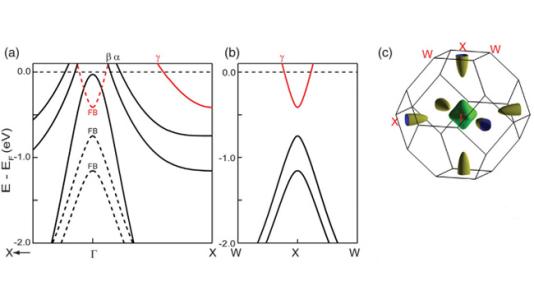
Scientific Achievement
We have discovered a new mechanism for the extreme magnetoresistance (XMR) of order 105% recently reported in rocksalt-structure, nonmagnetic semimetals. Under this mechanism, rather than deriving from topological protection or perfect carrier compensation, XMR can also result from the cooperative action of a substantial difference in hole and electron mobility under moderate carrier compensation.
Significance and Impact
This work challenges prevailing views that topologically nontrivial electronic states or perfect carrier compensation are the exclusive mechanisms for XMR.
Research Details
- Angle-resolved photoemission spectroscopy (ARPES) studies on high quality single crystals show no fingerprints of topologically nontrivial states such as Dirac or Weyl points, in agreement with first-principles density functional theory calculations.
- Measured Fermi surface allows quantitative estimates of electron and hole concentrations.
- Two-band model, constrained by ARPES charge concentrations, leads to XMR and excellent agreement with measured magnetotransport data.
Argonne National Laboratory seeks solutions to pressing national problems in science and technology. The nation’s first national laboratory, Argonne conducts leading-edge basic and applied scientific research in virtually every scientific discipline. Argonne researchers work closely with researchers from hundreds of companies, universities, and federal, state and municipal agencies to help them solve their specific problems, advance America’s scientific leadership and prepare the nation for a better future. With employees from more than 60 nations, Argonne is managed by UChicago Argonne, LLC for the U.S. Department of Energy’s Office of Science.
The U.S. Department of Energy’s Office of Science is the single largest supporter of basic research in the physical sciences in the United States and is working to address some of the most pressing challenges of our time. For more information, visit https://energy.gov/science.